Italy has hundreds of dress shoe brands, and they come and go, ups and downs, once brilliant, then no longer exist. The one which is so sought after may has no history at all. You can call it a very vibrant market. At present, it is divided into two factions, one is the fashion houses, and their key market is the United States. The other is enthusiastic, the key market is not defined by location, but enthusiasts all over the world.
The Italian brands that have been popular in history are all because they captured the hearts of Americans, because as the world’s undoubted no. 1 consumer market, win the United States, win the world. Italian brand Walles Club has a different path, you all go first, I will go second (biggest consumer market). This company only focuses on the Japanese market, and to this day, it is still alive and well. Although there are not many people who even know about it outside of Japan. The company has three brands, Fratelli Giacometti, Walles Club and Marmolada. Walles Club focuses on exotic leathers.
Let us check mine.
Last
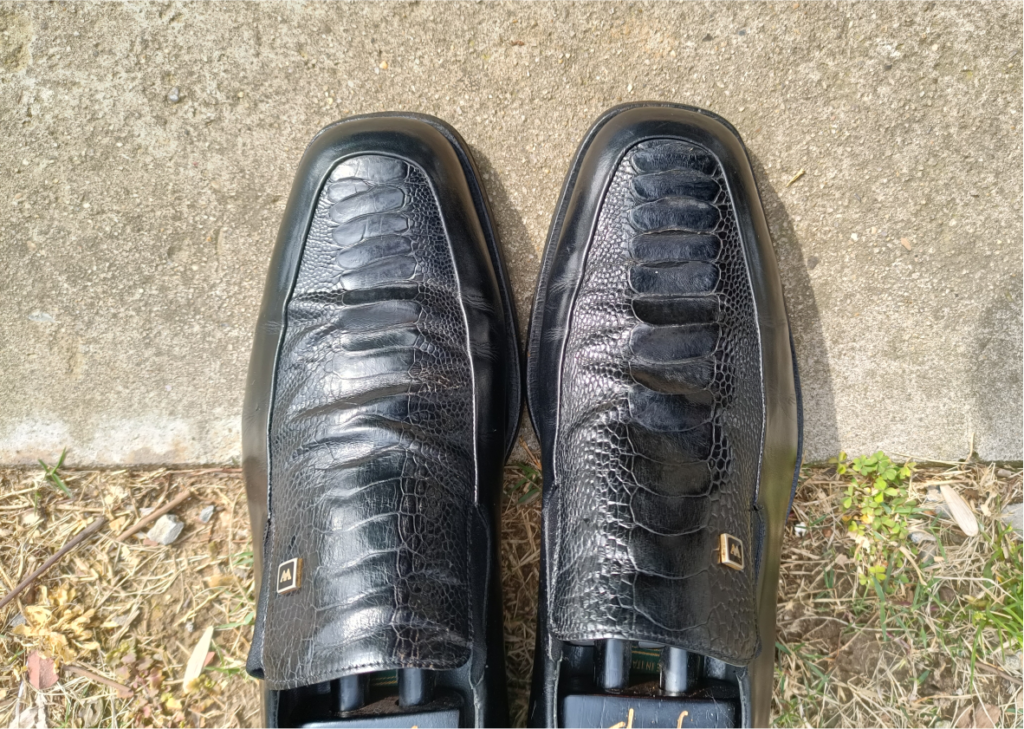
Another inexplicable aesthetic that an Italian contributed to all mankind. If you ask a person how Italian shoes feel, the probability is that they are sharp, elongated, and delicate. But the most square toe in the world is the thing that Italians promoted in the 1980s.

I think the aesthetic trend must be related to the social environment at that time, and I suspect that the power suit of the 80s is in the same vein as this square toe, but why do you emphasize your power so much, this is a socio-historical problem, and I need to explore it separately.
Pattern

Very standard old-school Italian loafers, in other words, the most popular model in China even till this day. This kind of Loafer, for a long time, is despised by enthusiasts, but now it is a little restored.
In the field of fashion, whether you are daring or the hated is really a matter of timing. When this style just entered China from Italy, it must be the most trendy, and the richest people wore it first, and it was the most bullish at that time. And as everyone wears it, this wave of people with fashion voice has become new and tired of the old, and this style has also become exclusive to losers.
But in Italy, this style is a local classic from start to finish, and has never been out of style.
Leather
Since Walles Club focuses on exotic leather, the leather is the most eye-catching point for this pair.
At first glance, I thought this was python leather. As a result, it was outrageously wrong.
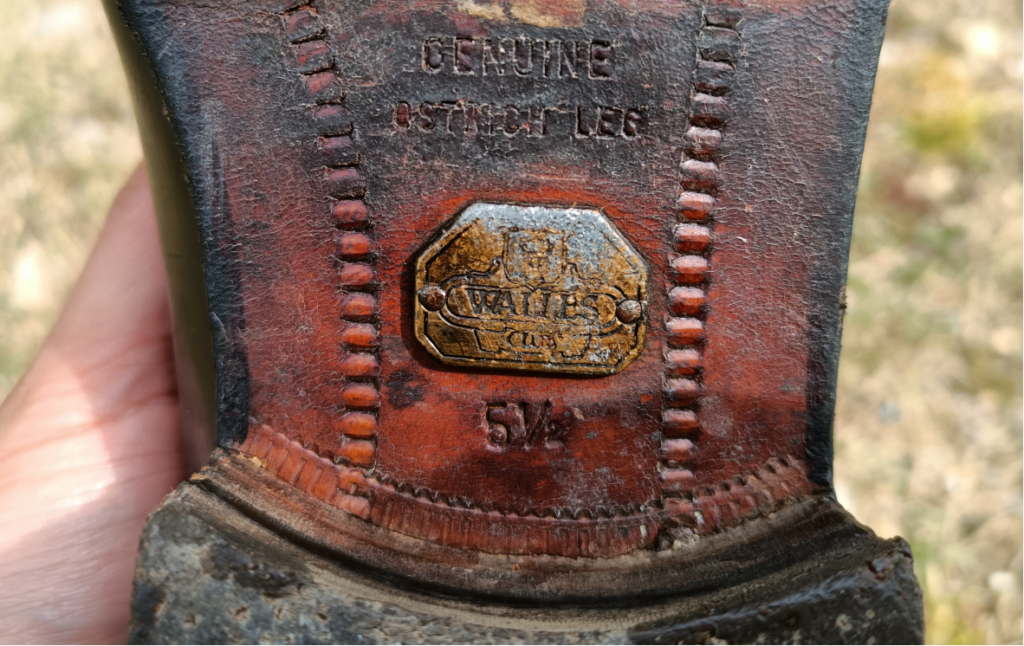
On the outsole is written, ostrich leg leather.
Wow, that’s the blind spot in my knowledge.
Ostrich skin is like this, but ostrich legs have completely different characteristics.
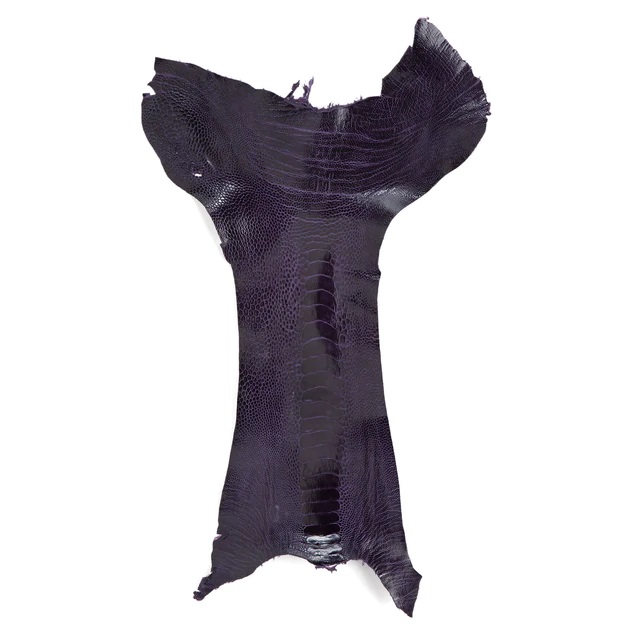
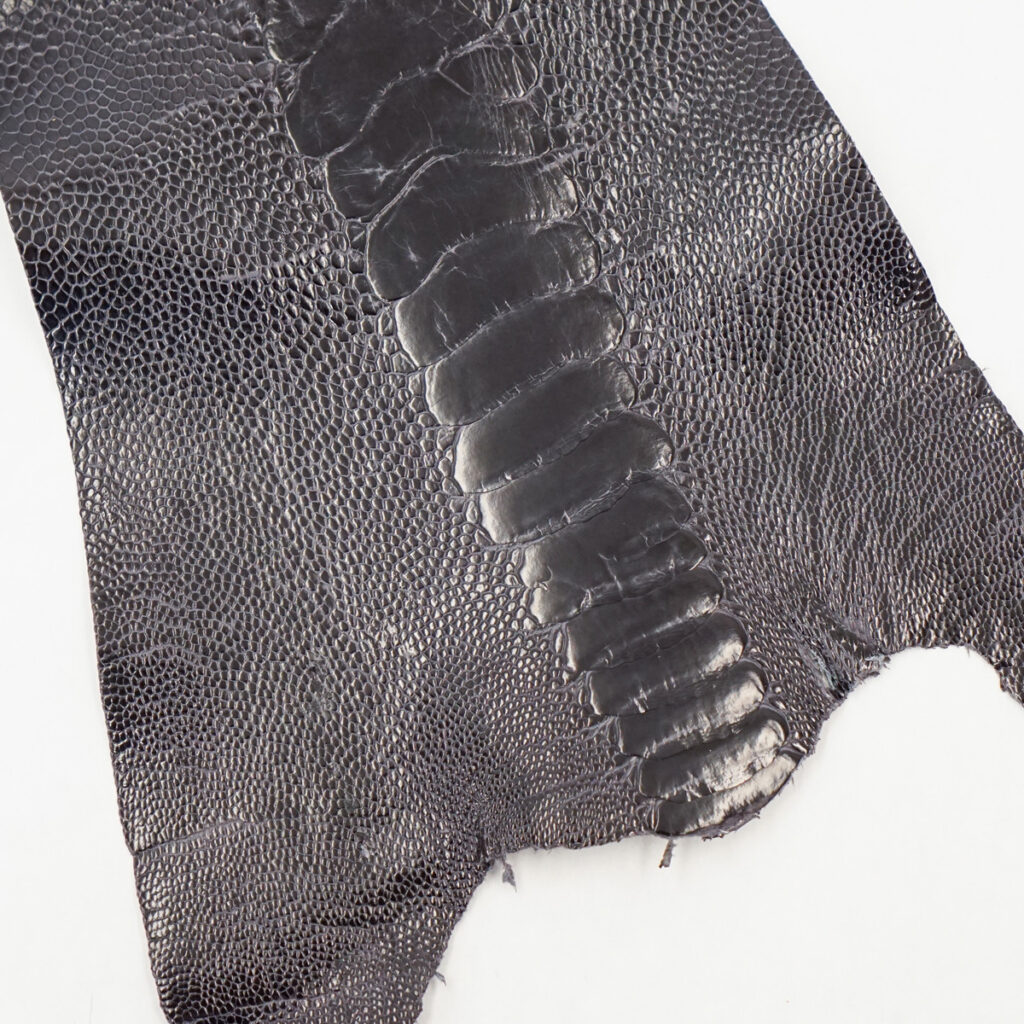
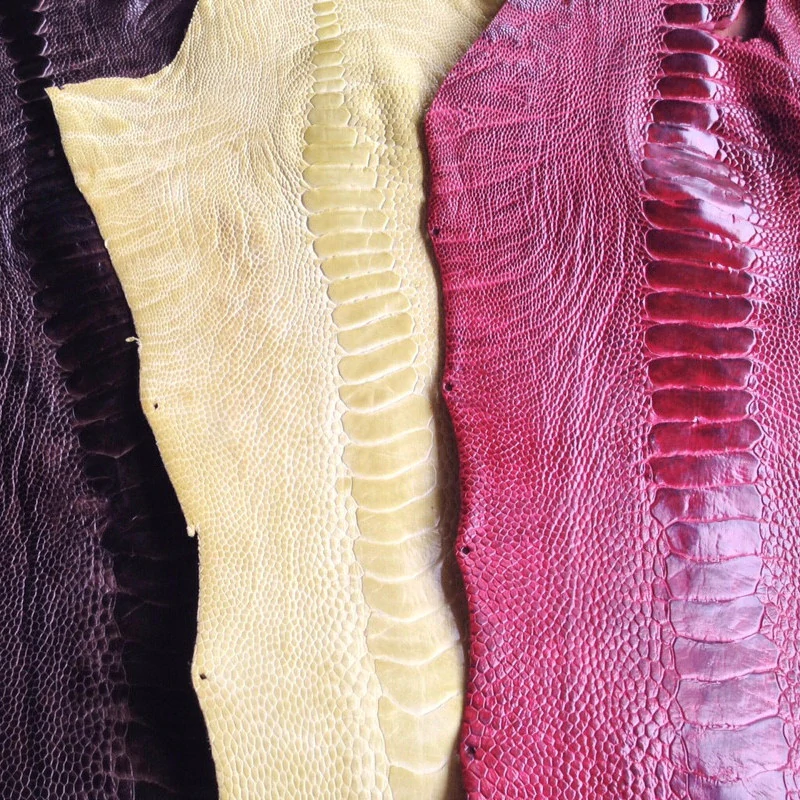
And it turned out that this was indeed the case.
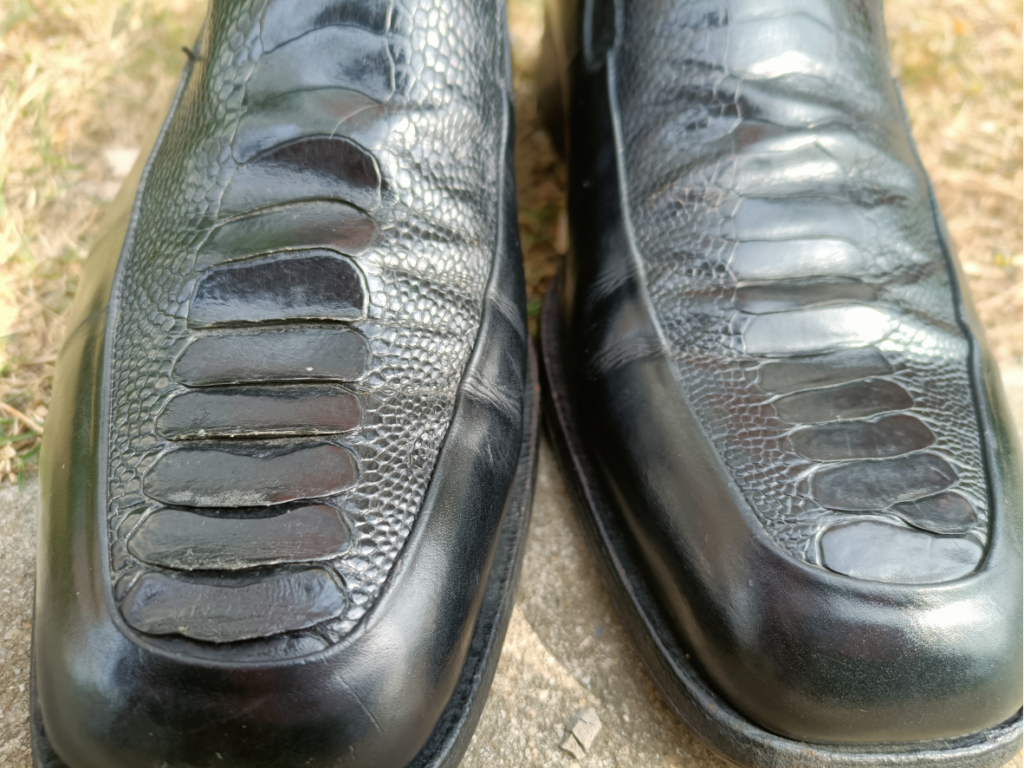
The feature is also fully displayed on this shoe, that is, the scale will be upturned, but will not fall off.
My character determines that exotic skins are not likely to be my dish, or that a small sullen can be taken but a large area is too exagerated.
Craftsmanship
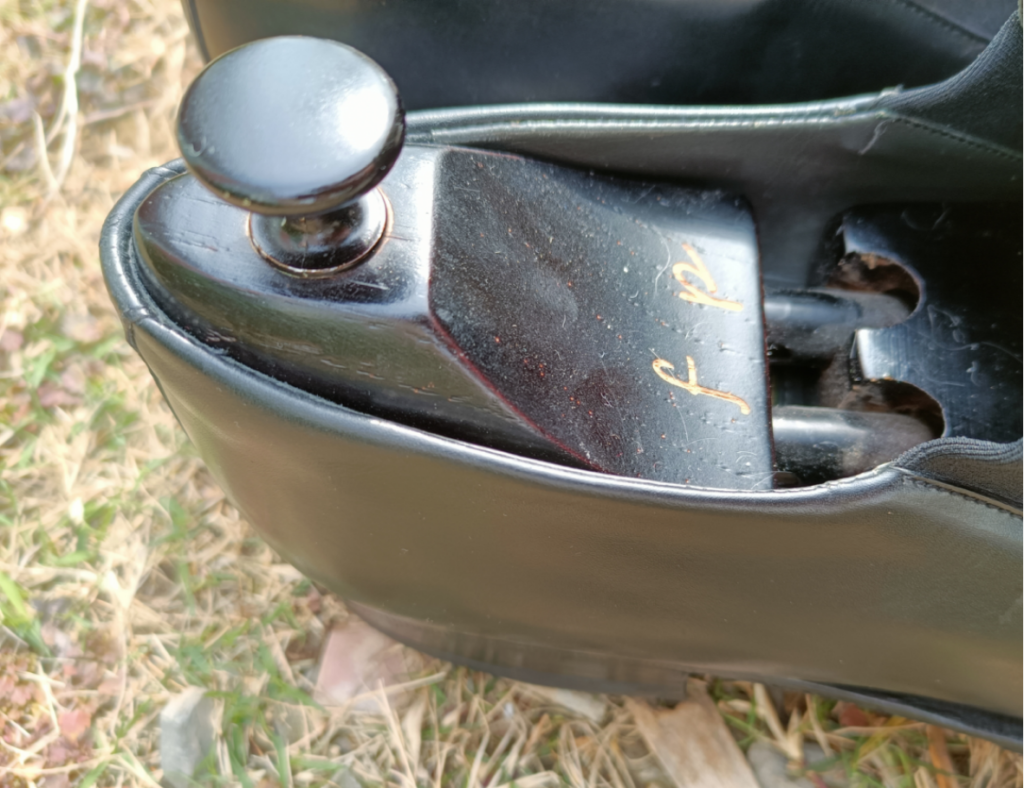
One of the characteristics of the workmanship is that the upper leather is folded back to form an hem.
The edges of the opening are not rough, but that smooth side is mostly implemented in two ways. One is edge oil, and the other is another layer of skin. Edge oil is the choice of most lace-up shoes, while hemming is preferred by Loafer or some American brands because it will look more noticeable and a little rougher.
This method seems to be comfortable.
Details
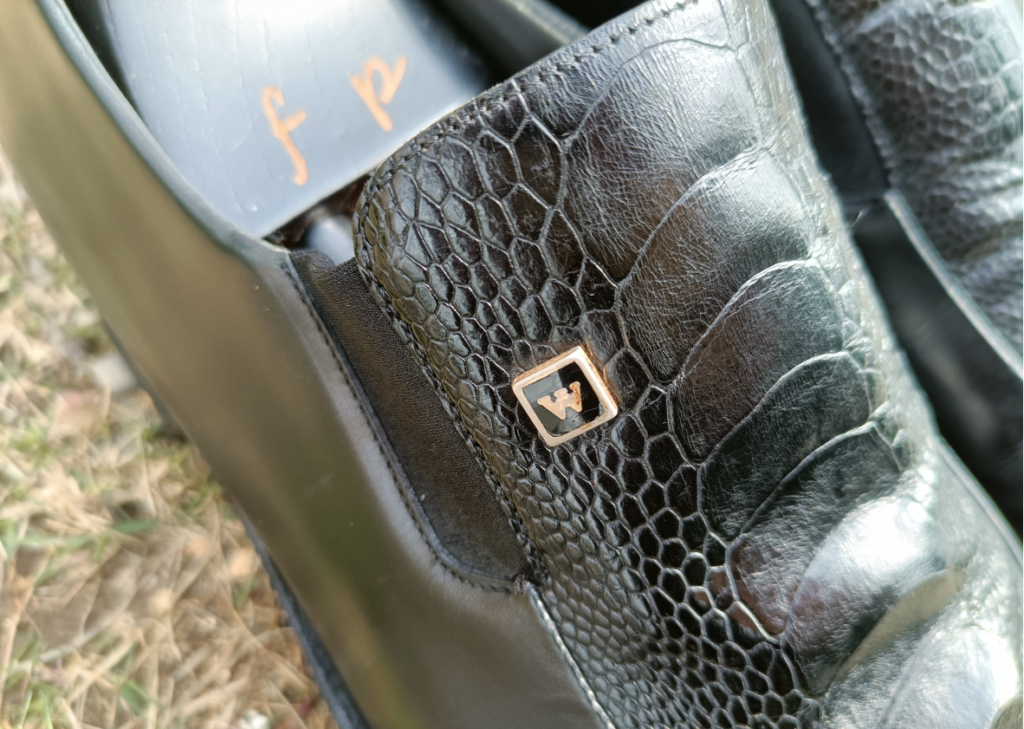
Another great point of influence of Italian shoes on Chinese dress shoes is a trademark on the upper and a small piece of metal. When I was a kid, Italian brands were popular, and few adults knew English, the very famous shoe brand Leonardo had the same feature.
To this day, LV likes to hit this small piece of metal on the side of the heel.
I used to reject this, thinking that the British was right, putting the trademark on the sole, not for people to see. But today I am more tolerated.
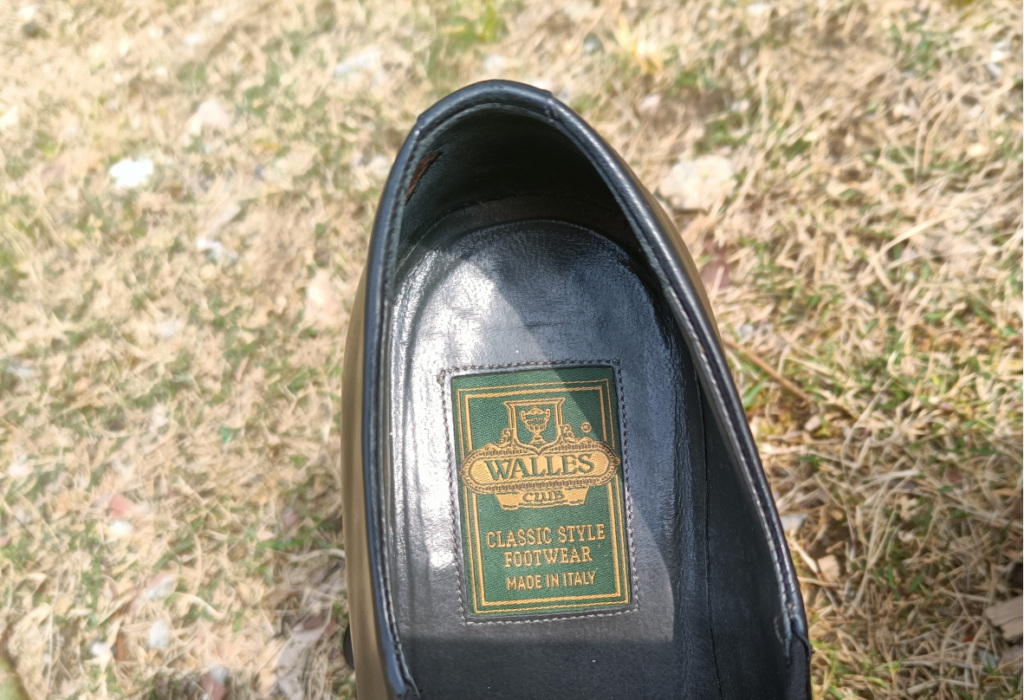
Most dress shoe brands print logo on sock lining, but Italians have always been accustomed to sewing a piece of fabric. This has also affected shoe factories in the United States, but now, Italy’s own brands are not used very much.
Summary
For many shoes, philatelic attributes are greater than the purpose of wearing, and I don’t support this behavior, but I can’t control myself. I can only convince myself that documenting it, as a carrier of culture, has some value.

